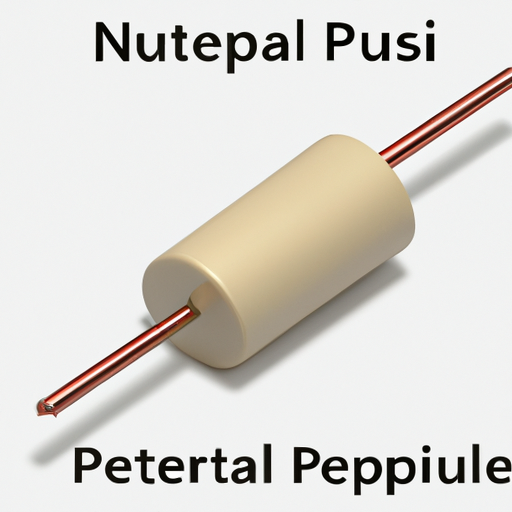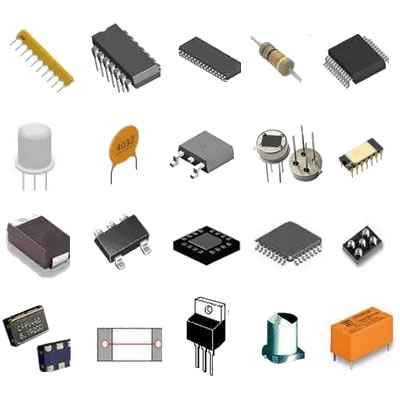What are the Popular Neutral Point Resistor Product Types?
I. Introduction
Neutral Point Resistors (NPRs) are critical components in electrical systems, serving essential functions that enhance the stability and safety of power distribution. These resistors play a pivotal role in managing fault currents and stabilizing voltage levels, making them indispensable in various applications, from industrial settings to renewable energy systems. This article aims to provide an in-depth understanding of NPRs, their types, applications, and the factors to consider when selecting them, while also exploring future trends in this technology.
II. Understanding Neutral Point Resistors
A. Function and Role in Electrical Systems
Neutral Point Resistors are primarily used to connect the neutral point of a transformer or generator to the ground. Their main functions include:
1. **Voltage Stabilization**: By providing a path for fault currents, NPRs help maintain voltage levels during transient conditions, ensuring that the system remains stable and operational.
2. **Fault Current Management**: In the event of a fault, NPRs limit the fault current, protecting equipment and ensuring safety. This is particularly important in systems where high fault currents can cause significant damage.
B. Types of Electrical Systems Utilizing NPRs
NPRs are utilized in various electrical systems, including:
1. **Power Generation**: In power plants, NPRs help manage the electrical output and maintain system stability.
2. **Power Distribution**: NPRs are essential in substations and distribution networks, where they help manage the flow of electricity and protect against faults.
3. **Renewable Energy Systems**: With the rise of solar and wind energy, NPRs are increasingly used to stabilize the output from these variable sources.
III. Key Features of Neutral Point Resistors
When selecting NPRs, several key features should be considered:
A. Resistance Values and Ratings
NPRs come in various resistance values, which determine their ability to limit fault currents. The choice of resistance value is crucial for ensuring optimal performance in specific applications.
B. Thermal Management
Effective thermal management is vital for NPRs, as they can generate significant heat during operation. High-quality NPRs are designed to dissipate heat efficiently, ensuring longevity and reliability.
C. Durability and Environmental Considerations
NPRs must withstand harsh environmental conditions, including temperature fluctuations, humidity, and exposure to corrosive substances. Selecting durable materials is essential for ensuring the longevity of these components.
D. Compliance with Industry Standards
NPRs should comply with relevant industry standards to ensure safety and reliability. Compliance with standards such as IEC, IEEE, and ANSI is crucial for ensuring that the NPRs meet the necessary performance criteria.
IV. Popular Types of Neutral Point Resistor Products
A. Fixed Neutral Point Resistors
1. **Description and Applications**: Fixed NPRs have a predetermined resistance value and are commonly used in applications where the fault current levels are known and consistent.
2. **Advantages and Disadvantages**: The main advantage of fixed NPRs is their simplicity and reliability. However, they lack flexibility, making them less suitable for applications with variable fault current levels.
B. Adjustable Neutral Point Resistors
1. **Description and Applications**: Adjustable NPRs allow for the resistance value to be changed, making them suitable for applications where fault current levels may vary.
2. **Advantages and Disadvantages**: The flexibility of adjustable NPRs is a significant advantage, but they can be more complex and costly compared to fixed NPRs.
C. High-Power Neutral Point Resistors
1. **Description and Applications**: High-power NPRs are designed to handle large fault currents and are typically used in industrial applications and power generation facilities.
2. **Advantages and Disadvantages**: These resistors provide excellent performance under high-stress conditions, but they can be expensive and require careful thermal management.
D. Low-Power Neutral Point Resistors
1. **Description and Applications**: Low-power NPRs are used in smaller systems, such as residential or small commercial applications.
2. **Advantages and Disadvantages**: They are cost-effective and easy to install, but may not provide the same level of performance as high-power NPRs in demanding environments.
E. Custom Neutral Point Resistors
1. **Description and Applications**: Custom NPRs are designed to meet specific requirements of unique applications, providing tailored solutions for complex systems.
2. **Advantages and Disadvantages**: Custom NPRs offer flexibility and optimization for specific needs, but they can be more expensive and time-consuming to produce.
V. Applications of Neutral Point Resistors
A. Industrial Applications
In industrial settings, NPRs are used to protect machinery and equipment from fault currents, ensuring operational safety and reliability.
B. Renewable Energy Applications
NPRs play a crucial role in stabilizing the output of renewable energy systems, such as wind and solar farms, where variable generation can lead to instability.
C. Utility and Grid Applications
In utility and grid applications, NPRs help manage the flow of electricity, ensuring that the grid remains stable and can handle fluctuations in demand.
D. Transportation and Automotive Applications
NPRs are increasingly being used in electric vehicles and transportation systems to manage electrical loads and enhance safety.
VI. Factors to Consider When Choosing Neutral Point Resistors
A. System Requirements and Specifications
Understanding the specific requirements of the electrical system is crucial for selecting the appropriate NPR. This includes knowing the expected fault current levels and operational conditions.
B. Environmental Conditions
The environmental conditions in which the NPR will operate should be considered, including temperature, humidity, and exposure to corrosive elements.
C. Cost Considerations
While cost is always a factor, it is essential to balance cost with performance and reliability. Investing in high-quality NPRs can lead to long-term savings by reducing maintenance and replacement costs.
D. Manufacturer Reputation and Support
Choosing a reputable manufacturer with a history of producing reliable NPRs is essential. Additionally, consider the level of support and service they provide.
VII. Future Trends in Neutral Point Resistor Technology
A. Innovations in Materials and Design
Advancements in materials science are leading to the development of more efficient and durable NPRs, which can withstand higher temperatures and provide better thermal management.
B. Integration with Smart Grid Technologies
As the electrical grid becomes smarter, NPRs will play a vital role in managing the complexities of modern power distribution, including real-time monitoring and control.
C. Sustainability and Environmental Impact
With increasing focus on sustainability, manufacturers are exploring eco-friendly materials and production processes for NPRs, reducing their environmental footprint.
VIII. Conclusion
Neutral Point Resistors are essential components in modern electrical systems, providing stability and safety across various applications. Understanding the different types of NPRs, their features, and their applications is crucial for selecting the right product for specific needs. As technology continues to evolve, NPRs will play an increasingly important role in the future of electrical systems, particularly in the context of renewable energy and smart grid technologies.
IX. References
A comprehensive list of academic papers, industry reports, and manufacturer resources would be included here to support the information presented in the article.
---
This blog post provides a detailed overview of Neutral Point Resistors, their types, applications, and considerations for selection, while also addressing future trends in the field.





